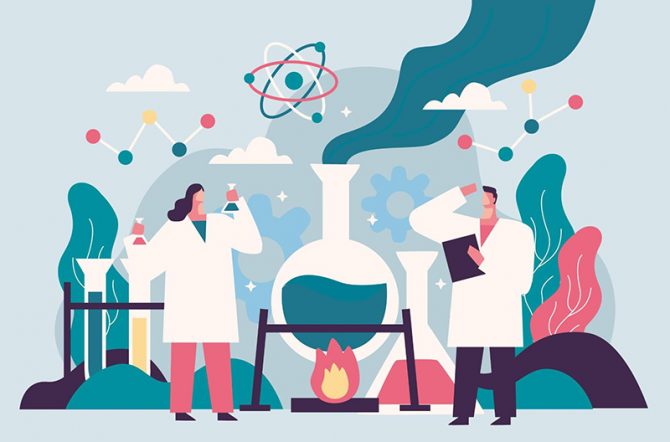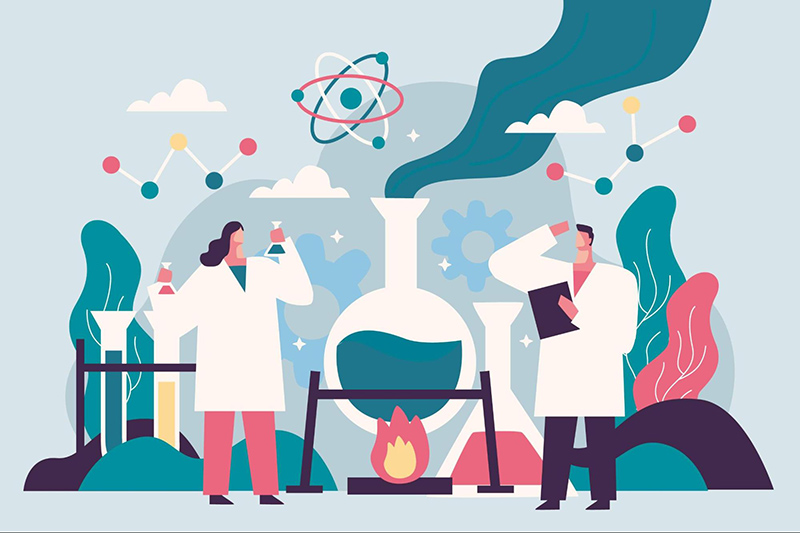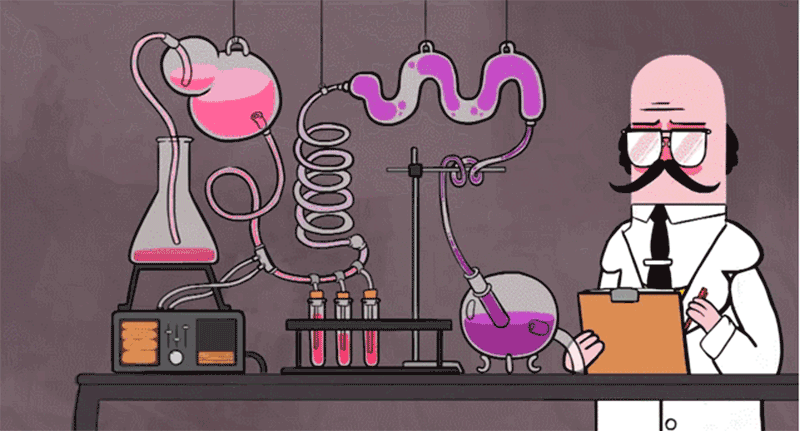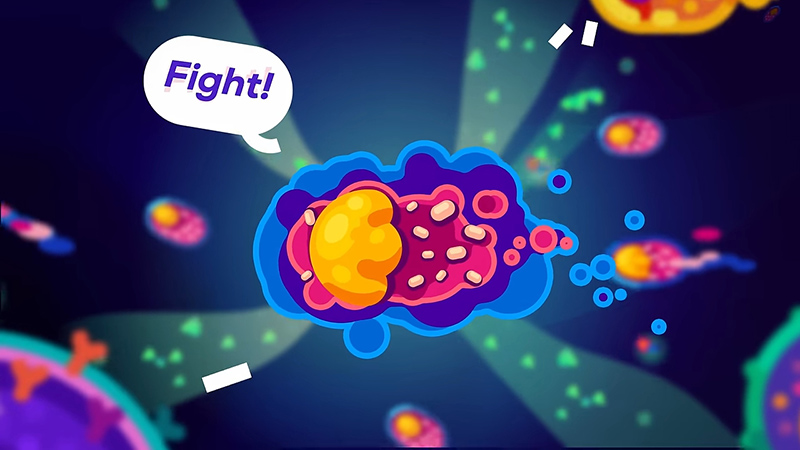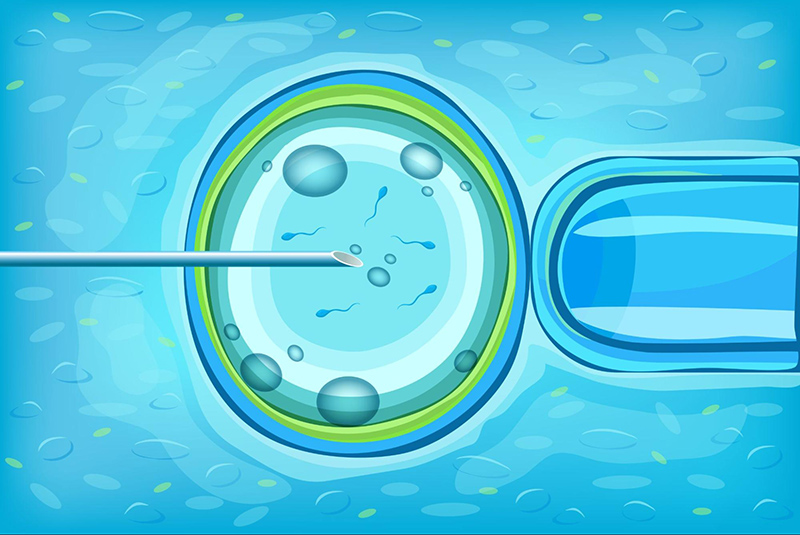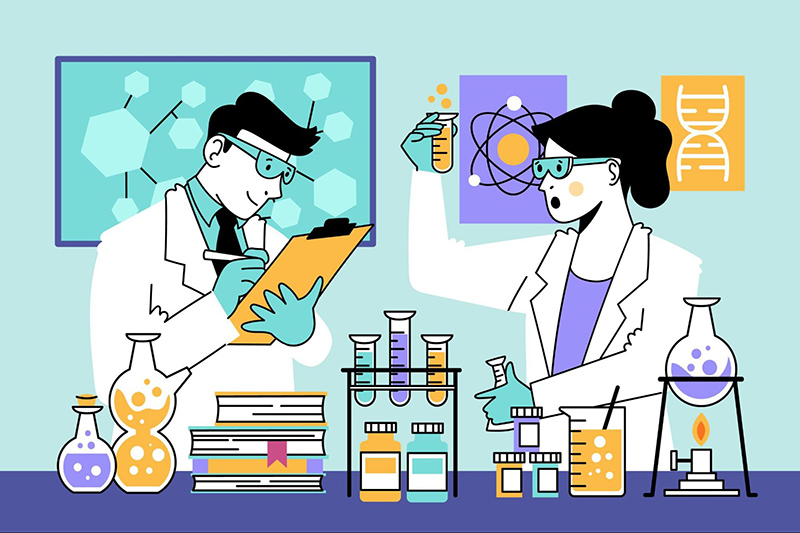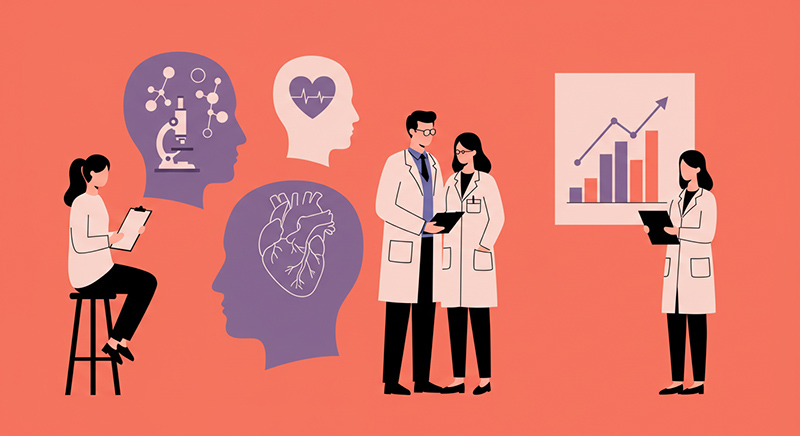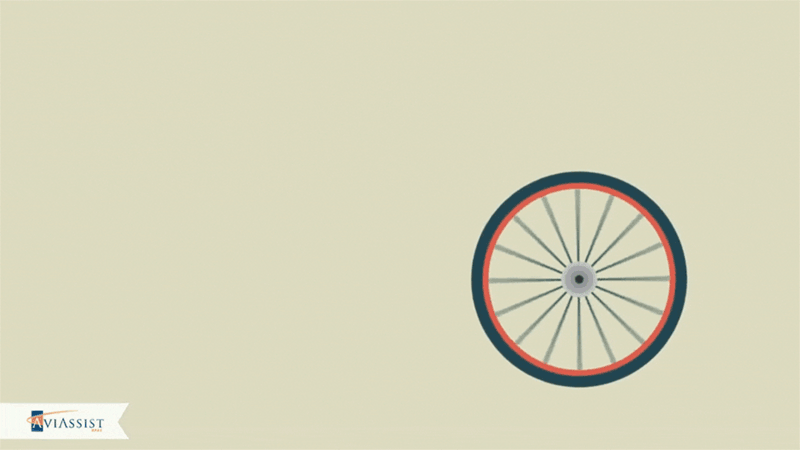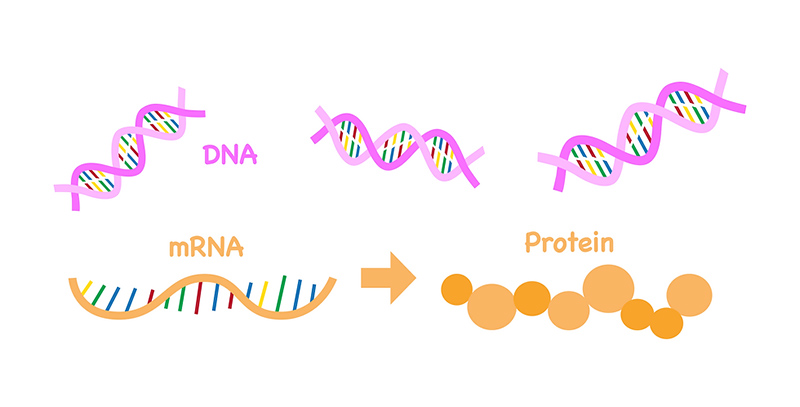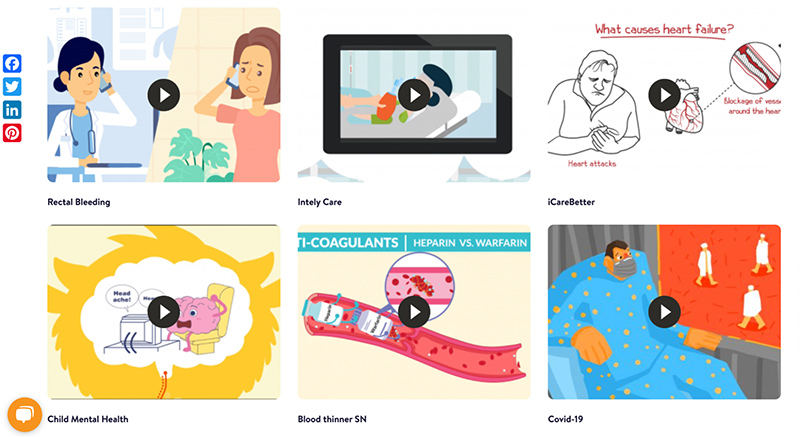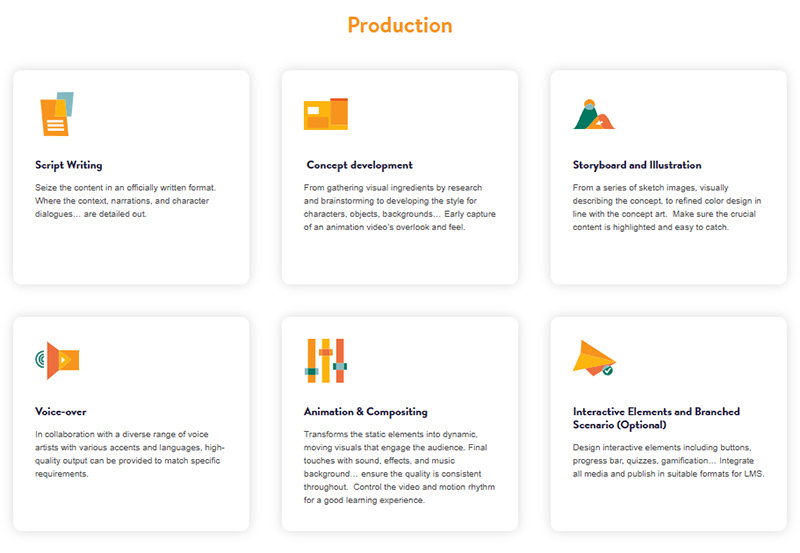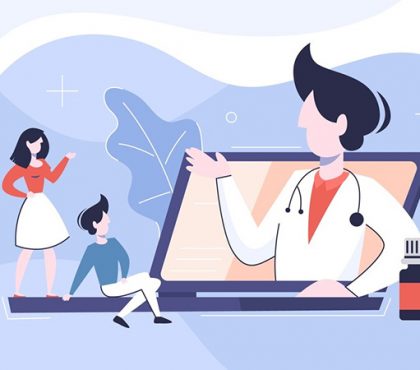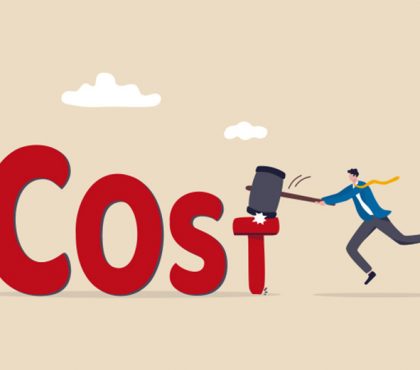Struggling to explain complex science? Learn how scientific animation simplifies concepts and explore 9 impressive examples to inspire your project.
Ever feel like explaining complex scientific ideas leaves your audience confused? Or maybe your groundbreaking work isn’t making the impact it should? Scientific animation is here to change that. It turns overwhelming data into clear, captivating visuals that grab attention and simplify learning.
In this article, we’ll cover the benefits, explore 3 science animation types with 9 examples, and tackle common production challenges. But first, watch the example below to see how scientific animation makes medical concepts like keratosis pilaris understandable.
- Why Science Animation Can Elevate Communication
- 3 Types of Scientific Animation and 10 Examples
- Remarkable Applications of Scientific Animation
- What Makes an Effective Animated Science Video?
- Top 8 Science Animation Software to Get Started
- Challenges When Creating Scientific Animation and How to Overcome
- Top 5 Companies Help You Elevate Your Scientific Content with Animation
- Conclusion
Why Science Animation Can Elevate Communication
Scientific discoveries and processes are often packed with complexity, making them difficult to communicate effectively. Animated science videos offer a transformative solution, breaking down intricate concepts into clear, visually engaging stories. Let’s explore how scientific animation elevates communication and makes science more impactful.
- Makes complex science crystal clear: Scientific animation simplifies intimidating concepts into approachable and fascinating stories.
- Unlocking the invisible: It visualizes phenomena beyond the naked eye, turning abstract processes into tangible realities.
- Captures attention like never before: Animation’s dynamic visuals make science feel like an engaging adventure, drawing viewers in.
- Improves science knowledge retention: By combining motion and storytelling, it reinforces concepts and helps knowledge stick longer.
- Bridges the expert-layperson gap: Friendly, relatable visuals make technical topics understandable and enjoyable for everyone.
3 Types of Scientific Animation and 10 Examples
The best part about scientific animation? There’s a style for every need! Here are 3 popular types of scientific animations, along with 10 awesome examples to get inspired.
Whiteboard animation
Whiteboard scientific animation combines hand-drawn illustrations with dynamic storytelling, creating a clean and engaging way to explain complex ideas with clarity and simplicity. With its minimalist style, it highlights the key points without overwhelming viewers, making it easier for students and the general public to grasp challenging concepts.
Heart failure
The video on heart failure effectively uses whiteboard animation to convey complex medical information in an accessible manner. The visual representation, such as the heart’s function and the effects of heart failure on the body, reinforces the spoken content by providing a concrete image of abstract concepts.
Vestibular migraine
This whiteboard animation on vestibular migraine serves as an educational tool designed to inform patients about this specific type of migraine. By simplifying complex information into engaging visuals and clear explanations, it enhances understanding and empowers viewers to take proactive steps in managing their health.
The science of HIV/AIDS
This scientific animation employs vibrant colors and engaging illustrations to communicate complex scientific information about HIV/AIDS effectively. Combined with straightforward language, the animation makes scientific information accessible to a broad audience.
2D animation
2D science animation uses motion and character to explain processes, fostering a deeper understanding and engagement with the material. This approach shines when conveying intricate mechanisms or visualizing microscopic worlds, and excels at transforming intimidating topics into compelling stories.
Black holes explained
You might have watched scientific videos of Kurzgesagt – an expert known for making complex knowledge accessible to everyone by using 2D animation. The video above is a striking example of 2D scientific animation, which presents a comprehensive overview of black holes, their formation, characteristics, and the implications of falling into one.
PNJ engineering
The video on the PN junction function utilizes 2D animation to explain the principles of semiconductor physics. The physics formula and principles are much easier to understand thanks to dynamic illustrations.
Permaculture
The video on permaculture uses 2D animation to explain complex concepts related to sustainable agriculture and ecosystem design. It employs dynamic visuals to depict processes like planting techniques, natural interactions among species, and the overall design of permaculture systems.
Child mental health
This 2D science animation uses bright colors and playful illustrations to explain the role of the vagus nerve in the body. This makes complex physiological concepts more accessible and interesting to viewers, especially children.
3D animation
3D scientific animation takes visualization to the next level, offering a deeply immersive and realistic way to explore complex scientific concepts. With its ability to depict intricate structures and dynamic processes from all angles, it provides unparalleled clarity and understanding, particularly in fields like medicine, engineering, and astrophysics.
Zika virus
The video above discusses the Zika virus, its transmission, and potential consequences. It depicts how the Zika virus travels from the mother to the fetus, illustrating the biological mechanisms involved, only in 15 seconds.
How mitochondria produce energy
The 3D animated science video on mitochondria effectively illustrates the complex process of energy production in cells. Dynamic visuals and text explanations help viewers distinguish between various components, such as membranes, protons, and ATP molecules, reinforcing understanding.
The inner life of the cell
This is a sophisticated 3D animation designed to illustrate cellular processes for educational purposes. Featuring detailed depictions of cellular structures and their functions, it aims to educate students about cellular biology by visually representing the intricate mechanisms within a cell.
Get more insights: 6 Best Examples of Science Animation Videos in eLearning
Remarkable Applications of Scientific Animation
We’ve seen how different animation styles, but these aren’t just visually appealing techniques; they are powerful tools with far-reaching applications. Now, let’s explore the remarkable ways these different types of scientific animation are transforming fields like medical training, patient education, and even product marketing.
Advancing medical education and training
Science animation has turned medical education into an exciting visual experience. Instead of memorizing pages of dense textbooks, students can now watch animated sequences that show how the heart pumps blood or how cells interact. This friendly, engaging format makes even the most complex concepts feel approachable, helping learners feel confident and supported as they navigate their medical training.
Transforming research communication
Sharing research by using animation has become something thrilling rather than tedious. With animations, data, and discoveries leap off the page and come to life. And there’s proof it works—studies show articles with video abstracts receive 20% more citations.
Kurzgesagt, again, makes a perfect example in using animation to transform rigid scientific knowlege. By simplifying complex topics into visually stunning animations, Kurzgesagt makes science both engaging and easy to understand. Their videos not only inform but also resonate deeply with audiences, making them feel connected to the knowledge and inspired by its relevance to their lives.
Boosting public awareness campaigns
Public campaigns to raise awareness don’t have to be boring! Scientific animations are making important messages about disease prevention, healthy habits, and environmental issues, super fun and memorable. By using compelling stories and engaging visuals, they’re capturing the public’s attention and making big ideas feel personal and actionable.
Marketing and product development
Products that once felt too technical or dry now have a new charm thanks to animation. From sleek demos of gadgets to vibrant explanations of new tech, these animations bring a breath of fresh air to complicated innovations. They spark curiosity, draw in customers, and make the details unforgettable.
Read more: Science Animation: A Detailed Guide with 4 Key Insights
What Makes an Effective Animated Science Video?
You’ve seen several examples of scientific animation and its application in various fields, but not all videos hit the mark. Some stand out because they’re accurate, easy to follow, and visually stunning. Others might miss the point if they’re too complicated or poorly designed.
So, what makes an animated video effective? Let’s break it down and explore the key elements that can make your animation both engaging and impactful.
Accuracy and scientific rigor
It’s not enough for an animation to look good; it must faithfully represent the scientific principles and data it’s portraying. This rigor is essential to build trust and credibility, ensuring the animation serves as a reliable educational resource, not just an entertaining one. After all, you want your audience to learn science, not just watch a show!
Clarity and understandability
A brilliant scientific concept is useless if it’s not understood. An effective animated science video prioritizes clarity, breaking down complex ideas into digestible pieces. The goal is to make even the most intricate subjects feel understandable and approachable, ensuring that the audience grasps the core concepts without feeling overwhelmed.
Visual appeal and engagement
Beyond accuracy and clarity, the visual design must capture attention. Vibrant colors, fluid animations, and creative storytelling elevate the learning experience, turning passive viewers into active learners. When science is presented in an engaging way, curiosity and interest naturally follow.
Target audience consideration
Finally, a crucial aspect of an effective animated scientific video is its consideration of the target audience. A video designed for medical professionals will likely differ greatly from one intended for a general audience or for school-aged children.
The animation must be tailored to the knowledge level, interests, and learning style of the intended viewers. This means adapting the complexity of the language, the visual style, and the pace of information.
Top 8 Science Animation Software to Get Started
If you’re creating scientific animations—whether for healthcare, education, or research communication—having the right tools can save hours and elevate your visuals. These science animation software programs range from beginner-friendly platforms to advanced 3D solutions used by professionals. Below is a quick comparison to help you choose the best fit based on your goals and budget.
| Software | Key Features | Pricing |
|---|---|---|
| Blender | 3D modeling, simulation, compositing, open-source | Free |
| After Effects | Motion graphics, visual effects, plugins for scientific visualizations | From $22.99/month (Adobe CC) |
| Cinema 4D | High-end 3D animation, real-time rendering, physics-based simulations | From $59.91/month (Maxon One) |
| BioRender | Drag-and-drop science-specific templates, protein/pathway illustrations | Free tier + paid from $39/month |
| Vyond | Easy animation builder with character and scene options, great for narration | From $25/month |
| Toon Boom Harmony | Professional 2D animation, rigging, and lip-syncing tools | From $28.50/month (Essentials) |
| Maya | Advanced 3D animation, simulations, often used for medical and anatomical models | From $225/month (Autodesk) |
| Moovly | Web-based, drag-and-drop animation with voiceover and screen capture tools | Free tier + paid from $49/month |
Read more: Best 10 Educational Animation Software
Challenges When Creating Scientific Animation and How to Overcome
Making a science animation isn’t always easy—it’s a mix of art, science, and storytelling. But don’t worry! With the right approach, these challenges can turn into opportunities to create something amazing.
Ensuring scientific accuracy
One of the biggest hurdles in scientific animation is ensuring absolute accuracy. To overcome this, meticulously research the subject matter, consult with experts, and ensure that every detail, from the movement of molecules to the structure of anatomical features, is factually correct. Remember, accuracy is not a constraint, but the foundation upon which your animation’s educational value is built.
Simplify complex scientific concepts
Scientific ideas often exist in abstract spaces, making their visual representation inherently tricky. The challenge here is to distill these intricate concepts into understandable forms without compromising their integrity.
This is achieved by breaking down complex ideas into smaller, digestible parts, and leaning heavily on visual metaphors and analogies. Focus on the core concepts, carefully selecting details that contribute to clarity, and avoiding the temptation to overload viewers with extraneous information.
Take the Crack Growth animation below for example. To simplify the concept of the cyclic tension loading of a material, it breaks the process into clear, repetitive cycles and pays careful attention to the motion and pacing.
Maintaining viewer engagement
Keeping an audience interested, especially with detailed scientific topics, can be challenging. To counter this, you should prioritize captivating visuals and engaging narratives. Think of storytelling techniques, using relatable characters and scenarios to make scientific processes come alive. Employ vibrant colors, dynamic motion, and pacing too to maintain a sense of discovery.
Balancing clarity and detail
Striking the right balance between clarity and detail can be a delicate act. Overly simplistic animations risk omitting critical insights, while overly detailed ones can overwhelm. The key is a layered approach – introduce the core ideas first and then gradually incorporate more nuanced details as needed. Visual cues like labels and callouts also help to highlight important points, guiding the viewer’s attention strategically.
Time and budget constraints
Scientific animations require a lot of research, technical expertise, and creativity, which makes the production process resource-intensive. To manage these limitations, prioritize tasks based on the animation’s goals. Using templates, open-source resources, and clear planning can help streamline the production process while maintaining quality.
You might be interested in: Top 7 Best Scientific Animation Services in 2024
Tackling these challenges requires a delicate balance of scientific rigor, artistic skill, and strategic planning. Luckily, you don’t have to face these hurdles alone. F. Learning Studio offers a dedicated approach, providing expertise and support to make your scientific animations both accurate and captivating.
Top 5 Companies Help You Elevate Your Scientific Content with Animation
1. F. Learning Studio
Maintain scientific accuracy with precise animation
At F. Learning Studio, scientific accuracy is our priority. With over 9 years of experience collaborating with professionals in the medical and scientific fields like Simple Nursing, King’s College, and iCareBetter, we ensure every detail in your animation is aligned with the latest research and knowledge.
By working closely with experts, we craft animations that are both visually stunning and factually credible. This not only enhances the educational value of your content but also builds trust with your audience, from educators to industry professionals.
Explore our portfolio to see how we combine scientific precision with creative storytelling to deliver impactful animations.
Affordable options for premium and modern-look visual designs
Modern-look visual designs are essential in scientific animation to stand out in today’s competitive landscape. However, achieving these polished visuals often comes with a hefty price tag due to the specialized skills, time, and resources required for production.
F. Learning Studio makes premium, modern-look animations accessible without breaking the bank. Based in Vietnam, we combine exceptional design with competitive pricing, offering premium, modern-look visuals that captivate and impress. Our streamlined production process also minimizes revisions and reduces turnaround times, ensuring you receive impactful animations that meet your goals and budget.
Simplify scientific concepts with customized animation
F. Learning Studio specializes in creating custom animation services for science that simplify even the most complex ideas and make them resonate with the specific audience group.
One example showing our extensive expertise is the Sedimentary Project, a collaboration with UNSW Sydney for their civil engineering program. The goal was to create an animation series that explained the formation processes of metamorphic rocks in a visually engaging and scientifically accurate way.
Challenge:
UNSW Sydney requested that the scientific animation be geologically accurate, with visuals designed to be both aesthetically pleasing and easily comprehensible for students.
Solution:
F. Learning Studio upgraded the provided resources with custom art concepts, carefully selecting colors that aligned with real-life tones while enhancing visual appeal. Using 2D motion graphics, we highlighted processes such as rock formation through simple, fluid movements.
The animations focused on storytelling, using changes in color and motion to illustrate complex processes without overwhelming the viewer with excessive detail. The inclusion of sound effects and seamless synchronization with the provided voiceovers further elevated the final product.
Result:
Students could now grasp these geological concepts more easily, thanks to the storytelling-driven animations. UNSW also praised us for producing visually engaging and scientifically accurate content that enhanced the teaching experience and resonated with learners.
Pave the path to better
science communication
Custom animations tailored for impact—book your consultation!
2. XVIVO
XVIVO is a pioneering medical and scientific animation studio founded in 2001, renowned for turning complex biological processes into visually stunning, memorable stories. Their works blend cinematic quality with rigorous scientific accuracy. They are a trusted partner for many biotech, pharmaceutical, and educational clients.
3. 3D for Science
3DforScience specializes in 3D medical animation tailored to healthcare companies, transforming intricate data and mechanisms into clear and compelling visual narratives that aid communication with clinicians, researchers, and stakeholders.
4. AXS Studio
AXS Studio brings exceptional accuracy and clarity to scientific animation with a team of graduate-level experts in biomedical science and board-certified medical illustrators. They excel in intricate projects—like MOA and device animations—as well as immersive experiences, ensuring scientifically credible and regulation-ready visuals.
5. Science Animated
Science Animated (Sci Ani) offers end-to-end animation services—from scriptwriting through to promotion—creating polished 2D and 3D visuals that bring academic, clinical, government, and non-profit research to life with style and impact.
Conclusion
Scientific animation is no longer a niche tool; it’s rapidly reshaping how we interact with science. It improves learning, boosts retention, and bridges the gap between experts and non-experts.
If you’re ready to elevate your scientific content, F. Learning Studio is willing to support you on this journey. With a focus on accuracy, clarity, and visual appeal, we help you deliver your message with impact. Contact us today to get started on your next project!
- WhatsApp: (+84) 378 713 132
- Email: [email protected]
- Fanpage: https://www.facebook.com/f.learningstudio
- LinkedIn: https://www.linkedin.com/company/f-learning-studio/
Read more:
- Science is Boring: 13 Reasons That Keep Us Disengaged
- MOA Videos: 9 Examples that Enhance Healthcare Education
- Surgery Animation: 7 Examples to Inspire Your Next Project

Sean Bui, the founder and creative director of F.Learning Studio, is a respected leader in the e-learning and multimedia production industry. With over 10 years of experience, he has dedicated his career to helping organizations create engaging and impactful learning experiences.
Under his leadership, F.Learning Studio has grown into a trusted partner for organizations in the education, healthcare, and corporate training sectors, producing over 2,000 minutes of educational animation.

